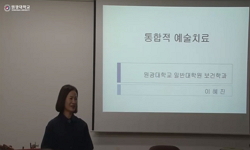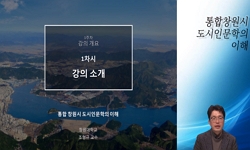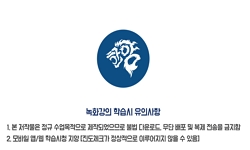I am interested in the changing the people`s awareness inherent in the works which were figuring the space `Hanyang` in 18~ 19th century. I also focus on researching the time`s poets` perspectives and awareness in the works especially. I study on the ...
http://chineseinput.net/에서 pinyin(병음)방식으로 중국어를 변환할 수 있습니다.
변환된 중국어를 복사하여 사용하시면 됩니다.
- 中文 을 입력하시려면 zhongwen을 입력하시고 space를누르시면됩니다.
- 北京 을 입력하시려면 beijing을 입력하시고 space를 누르시면 됩니다.

18~19세기, 시적 공간으로서의 한양에 대한 일고찰 -교류와 통합, 공존에 주목하여- = A Study on Hanyang as a Poetic Space in 18~19th century -Focused on Interchange, Integration and Coexistence-
한글로보기https://www.riss.kr/link?id=A82448463
- 저자
- 발행기관
- 학술지명
- 권호사항
-
발행연도
2010
-
작성언어
-
-
주제어
18~19세기 ; 한양 ; 시적 공간 ; 사대부의 공간 ; 민의 공간 ; 民의 공간 ; 시정 ; 市井 ; 교류 ; 통합 ; 공존 ; 18~19th century ; Hanyang ; Poetic Space ; Space of the Nobility ; Spaoe of the People ; Civic Space ; Interchange ; Integration ; Coexistence
-
KDC
800
-
등재정보
KCI등재
-
자료형태
학술저널
- 발행기관 URL
-
수록면
269-303(35쪽)
-
KCI 피인용횟수
8
- DOI식별코드
- 제공처
- 소장기관
-
0
상세조회 -
0
다운로드
부가정보
다국어 초록 (Multilingual Abstract)
I am interested in the changing the people`s awareness inherent in the works which were figuring the space `Hanyang` in 18~ 19th century. I also focus on researching the time`s poets` perspectives and awareness in the works especially. I study on the literary meanings of Hanyang as a poetic space at 18~19th century in the works of three literary genre -Sijo, Gasa and Chinese poetry from the side of figuring aspects it. I noticed to a middle-class community - civic space go after development of town and commercialization, high class` high culture and low class` subculture had been exchanging each other so they had shown aspects being integrating and coexisting in the poetic space. In the poetic works at 18~19th century, Hanyang was figured as a space of the nobility, ethical and Confucian space or a space of the people, worldly passions. But I verified that the opposite aims had been harmonized, combined and coexisted in the newly raised civic space at the period. The aspect are following. First, two tendencies figuring aim for a space of Confucian dignity and a space of worldly passions were coexisted. Second, typical nobility poet classified in high were shown parallel cultural diversion which had been combining high culture and subculture by figuring the secular character and life vividly in the high class genre Chinese poet. At last, typical ideological attitude like blessing Chosun dynasty or expressing a self-esteem as a Capital and a popularity of the civic space were coexisted in a same work. Civic space was a commercial space. This condition had been the foundation of promoting trade or exchange products and culture so it became public, actual and concrete space. I partly confirm that `Civic space` as a poetic space was figured out the space of trade, harmonizing, coexisting, parallel diversion and multitudes. `Hanyang` as 18~ 19th century`s poetic space was figured out as a space of harmony so it became the space of combining and coexisting existed nobility`s ideological values and actual` worldly values rather than arguing renovation or exposing social troubles in the objective works of this thesis. This thesis has some limitation to researching entire meanings of Hanyang as 18~19th century`s poetic space because of a presentation with the non-wide data and a shortage of the novelty of the data. I will extend my assertion in order to finding out an unified understanding about the poetic space in 18~19th century`s poem.
참고문헌 (Reference)
1 이병기, "한양가에 나타난 서울의 모습" 서울시사편찬위원회 (1) : 145-, 1957
2 정기철, "한양가 연구 -작자의식을 중심으로" 한남대 국어국문학회 12 : 96-111, 1986
3 이우성, "한국의 역사상" 창작과 비평사 26-64, 1982
4 이기백, "한국사신론" 일조각 324-341, 1990
5 조동일, "한국문학통사3" 지식산업사 331-, 1986
6 김학성, "한국 고전시가의 전통과 계승" 성균관대 출판부 405-, 2009
7 김명순, "조선후기 한시의 민풍수용 연구" 보고사 77-78, 2005
8 정인숙, "조선후기 시가에 나타난 도시적 삶의 양상과 그 의미" 한국어문학회 (103) : 281-313, 2009
9 강명관, "조선후기 서울과 한시의 변화 in: 조선시대 문학예술의 생성공간" 소명출판 373-401, 1999
1 이병기, "한양가에 나타난 서울의 모습" 서울시사편찬위원회 (1) : 145-, 1957
2 정기철, "한양가 연구 -작자의식을 중심으로" 한남대 국어국문학회 12 : 96-111, 1986
3 이우성, "한국의 역사상" 창작과 비평사 26-64, 1982
4 이기백, "한국사신론" 일조각 324-341, 1990
5 조동일, "한국문학통사3" 지식산업사 331-, 1986
6 김학성, "한국 고전시가의 전통과 계승" 성균관대 출판부 405-, 2009
7 김명순, "조선후기 한시의 민풍수용 연구" 보고사 77-78, 2005
8 정인숙, "조선후기 시가에 나타난 도시적 삶의 양상과 그 의미" 한국어문학회 (103) : 281-313, 2009
9 강명관, "조선후기 서울과 한시의 변화 in: 조선시대 문학예술의 생성공간" 소명출판 373-401, 1999
10 박애경, "조선 후기 시조의 통속화 과정과 양상 연구" 연세대 1998
11 박애경, "조선 후기 시조에 나타난 도시와 도시적 삶" 한국시조학회 16 : 377-399, 2000
12 허경진, "인왕산에 활동한 위항시인들의 모임터 변천사" 서울시립대 서울학연구소 13 : 87-88, 1999
13 김학성, "서민가사의 담론기반과 미학적 특성" 대동문화연구원 (47) : 163-192, 2004
14 박을수, "문학작품에 투영된 한양, -시조문학을 중심으로" 한국시조학회 10 : 129-151, 1994
15 한국고전문학회, "문학작품에 나타난 서울의 형상" 한샘출판 1994
16 김학성, "근대 논의 문제와 18세기 우리의 시가" 한국시가학회 28 : 7-27, 2010
17 정우봉, "강이천의 <한경사>에 대하여 -18세기 서울의 시적 형상화-" 일지사 20 (20): 26-51, 1994
18 방현아, "강이천과 <한경사>" 민족문학사학회 5 : 194-224, 1994
19 방현아, "重菴 姜彛天의 漢京詞 硏究" 성균관대 1993
20 이혜순, "漢詩에 나타난 서울의 형상 , 문학작품에 나타난 서울의 형상" 한샘출판 9-26, 1994
21 안대회, "城市全圖詩와 18세기 서울의 풍경" 한국고전문학회 (35) : 213-249, 2009
22 김은희, "<한양가>의 존재양상과 그 의미" 반교어문학회 (26) : 279-307, 2009
23 최래옥, "<한양가>의 작자의식" 우리文學硏究會 3 : 1978
24 홍흥구, "<한양가>와 예술사의 한 단면" 계명대 5 : 313-339, 1990
25 서종문, "<한양가>와 <한양오백년가 > in:한국고전시가작품론 2" 집문당 737-743, 1992
26 양보경, "<한양가>에 비친 조선 후기 서울의 모습" 한국토지개발공사 5 : 113-, 1994
28 정인숙, "19세기~20세기 초 가사에 나타난 근대 도시 공간의 소비와 유흥" 한국시가학회 27 : 271-306, 2009
29 신경숙, "19세기 서울 우대의 가곡집, 『가곡원류』" 한국고전문학회 (35) : 1-32, 2009
동일학술지(권/호) 다른 논문
-
연시조의 현대적 계승과 종장 운용의 특성 -이병기의 연시조를 중심으로-
- 한국시가학회
- 권정은 ( Jung Eun Kwon )
- 2010
- KCI등재
-
- 한국시가학회
- 임재욱 ( Jae Wook Yim )
- 2010
- KCI등재
-
고전기사와 일상성(日常性)의 문제 ; 기조발표 : 공시적 관점에서 본 고전시가와 일상성의 문제
- 한국시가학회
- 양태순 ( Tae Soon Yang )
- 2010
- KCI등재
-
- 한국시가학회
- 임주탁 ( Ju Fak Yim )
- 2010
- KCI등재
분석정보
인용정보 인용지수 설명보기
학술지 이력
| 연월일 | 이력구분 | 이력상세 | 등재구분 |
|---|---|---|---|
| 2027 | 평가예정 | 재인증평가 신청대상 (재인증) | |
| 2021-01-01 | 평가 | 등재학술지 유지 (재인증) |  |
| 2018-01-01 | 평가 | 등재학술지 유지 (등재유지) |  |
| 2015-01-01 | 평가 | 등재학술지 유지 (등재유지) |  |
| 2011-01-01 | 평가 | 등재학술지 유지 (등재유지) |  |
| 2009-01-01 | 평가 | 등재학술지 유지 (등재유지) |  |
| 2007-01-01 | 평가 | 등재학술지 유지 (등재유지) |  |
| 2004-01-01 | 평가 | 등재학술지 선정 (등재후보2차) |  |
| 2003-01-01 | 평가 | 등재후보 1차 PASS (등재후보1차) |  |
| 2002-01-01 | 평가 | 등재후보학술지 유지 (등재후보1차) |  |
| 2000-01-01 | 평가 | 등재후보학술지 선정 (신규평가) |  |
학술지 인용정보
| 기준연도 | WOS-KCI 통합IF(2년) | KCIF(2년) | KCIF(3년) |
|---|---|---|---|
| 2016 | 0.54 | 0.54 | 0.48 |
| KCIF(4년) | KCIF(5년) | 중심성지수(3년) | 즉시성지수 |
| 0.46 | 0.44 | 1.206 | 0.32 |




 KCI
KCI KISS
KISS







